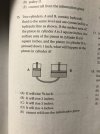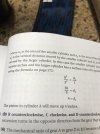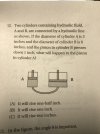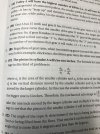Does the math portion have binomial combination? "Kyles Math section" has a worksheet with them and that seems way too complex for no calculator.
For example a question:
A jar contains ten black buttons and six brown buttons. If nine buttons are picked at random, what is the probability that exactly five of them are black?
To solve:
9C5(5/8)^5(3/8)^4
->(9!/5!4!)(5^5)(3^4)/(8^9)
That would take forever to actually multiply out by hand and no math courses even expect you to do that without calculator. Even beyond calculus where we couldn't use a calculator, these problems would never be asked.
Are the questions actually this long or are they more along the lines of basic dependent/independent probability?
i.e. "If there are 9 marbles, 3 blue, 3 red, 3 green, what are the chances of selecting 3 blue in a row without returning the marbles?"
For example a question:
A jar contains ten black buttons and six brown buttons. If nine buttons are picked at random, what is the probability that exactly five of them are black?
To solve:
9C5(5/8)^5(3/8)^4
->(9!/5!4!)(5^5)(3^4)/(8^9)
That would take forever to actually multiply out by hand and no math courses even expect you to do that without calculator. Even beyond calculus where we couldn't use a calculator, these problems would never be asked.
Are the questions actually this long or are they more along the lines of basic dependent/independent probability?
i.e. "If there are 9 marbles, 3 blue, 3 red, 3 green, what are the chances of selecting 3 blue in a row without returning the marbles?"





